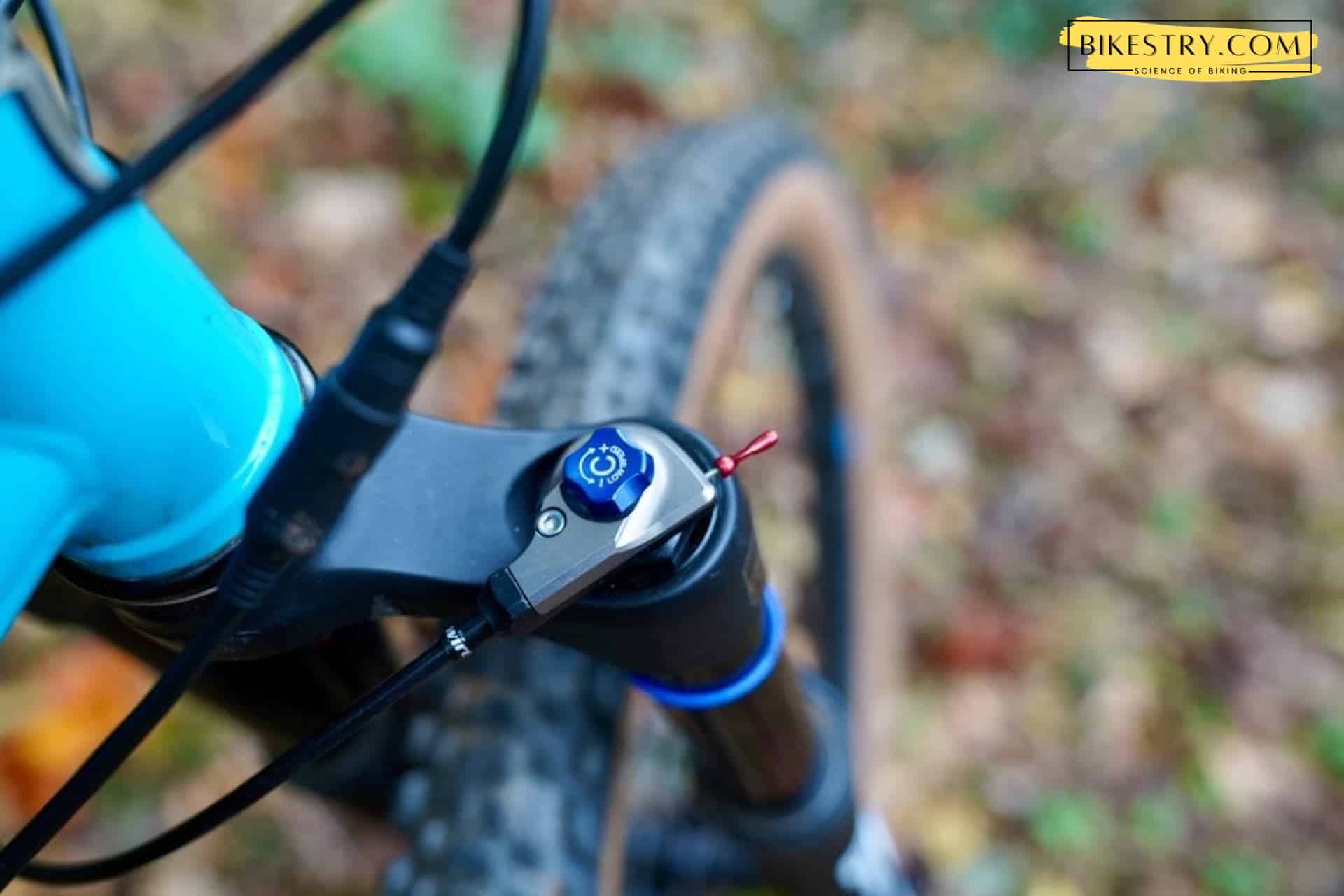Level Up Your Mountain Bike Adventures with a Lockout Fork. What is it and Why do you need it?
Mountain bike lockout fork refers to a small switch located on the top-front, right suspension of an MTB. It reduces the speed compression rate for the front fork when it is engaged. It can be adjusted between the point of becoming completely rigorous. Some mountain bikes may not have the lockout system. Others may have both the front and rear lockout forks. They all perform differently.
The lockout system usually comes with a
suspension handlebar,
which helps to dampen the rough terrain and gives the rider a smoother and more controlled ride. A MTB without a suspension fork or front suspension is called a
hardtail bicycle. An MTB with both the rear and front suspensions is called the
dual suspension. A
mountain bike
with no suspension is called a rigid bike.
Mountain bikes are usually equipped with either a handlebar-mounted suspension lockout or a fork. This greatly increases the ability to turn the suspension off and on. It also offers a range of settings. For example, high-end suspension models can have open settings that allow the suspension to remain fully active. Firm settings provide damper resistance, which is ideal for smooth offroad conditions. Closed settings lock the suspension out completely.
Do I need a Lockout Fork for my Mountain Bike?
It all depends on many factors. This is true even if your mountain bike doesn’t have lockout forks. Some bikers will prefer to have just one or two, while others won’t need any. Some people have them, but they are rarely used while riding.
It is important to understand the advantages and limitations of having a lockout on a bike. After that, weigh the two sides and reach a conclusion.
This section will discuss the differences between the Hardtail and full suspension MTBs.
The Full Suspension MTB
This bike has both the front and rear suspension systems. A mountain bike equipped with only the from suspension lockoutfork can be called a MTB front suspension. It could also benefit from a lockout fork.
The main benefit of having a full fork suspension system is its ability to absorb stamina while you cycle downhill. It makes riding more enjoyable.
The front suspension, on the other hand, makes it difficult to scale steep inclines and get up to speed quickly. This is because the fork suspension consumes a lot of energy when the MTB is ridden on pavements or uphill.
The Hardtail MTB
Hardtail MTBs are not equipped with front or rear fork suspension. This type of MTB offers exceptional responsiveness from the pedals. The suspension does not absorb energy so your bike will travel up hills and on flat terrains. This bike has a drawback: you won’t be able to enjoy or feel comfortable riding on uneven ground, and it will be hard for you to ride down the hill.
Once you have an understanding of the merits and demerits of each, you can decide if your bike should have a lockout fork.
How do you lock your front fork on a Mountain Bike?
The front lockout fork is useful when you are riding down hills or on rough terrain. The suspension can be controlled by a single switch. It is extremely difficult to ride up the mountain or on the pavements. The lockout uses a pressure-compressed lubricant to change the MTB’s rate of contraction and decompression. The suspension oil can drip quickly to the compartment if the fork is fully freed. A fork suspension that is completely locked can cause suspension oil to flow at an obstructed rate.
How do you repair a Fork Suspension on a Mountain Bike?
The fork suspension can only be replaced if the fork feels sluggish, creaky, or if it is too fast. You can only repair the suspension oil in your fork system. It is easy to fix by following these steps:
First, remove the front wheel and brakes as well as any other bolts or hooks that are clinging to the fork’s edges on the down tubes. Next, remove the blades from the lower tubes slowly to prevent lubricant spraying or spilling. Next, clean the inside of the fork with great care.
Take out all suspension and place it in a glass. Then, use the independent suspension grease according to the manuscript. Then, lubricate the bolt heads and tighten the screws with your fingers. Finally, ensure that the fork is protected with strong protection. The suspension can now be tested.
What is a Remote Lockout System on an MTB?
The
lockout lever
can be controlled using
dial pads
that are placed on the handlebars of mountain bikes. It is not necessary to get off your mountain bike to connect the pin with this lockout system. Remote lockout systems are vital due to the many trails and numerous climbs. It can also be used to lock out the rear shocks of your MTB.
Can you add a Lockout to a Fork of an MTB?
No, you can’t. Most forks cannot be used with remote lockout systems on mountain bike. First, many forks have extensive lockout capabilities, which are becoming more rare. You will also need a control knob that can be used to turn the remote lockout system. To see which parts are available, you should refer to the technical sheet attached to your fork.
When should I use a Lockout Feature on my fork?
A lockout feature can be used while you are cycling on roads or up steep hills. You can use your wasted energy while riding to create the shock or fork, and pedal up and down just like you do when you pedal. It can be useful to turn it off when you don’t need it.
While cycling on the road, the suspension provides extra traction to off-road hills. Besides, you can use it on long XC climbs since it allows for more pedal efficiency, but you should remember to take the lock off before your next steep rocky downhill section to avoid getting severe injuries.
What is the role of the Suspension Lockout on an MTB?
The suspension lockout can also be activated while riding on smooth roads or climbing up hills, increasing the pedaling efficiency. This lockout is vital as it allows the cyclist to adjust the valve settings, including how to lose and stiffen the congressional force on an MTB. The suspension allows the rider to unlock the MTB when they want. High-end forks can lockout or adjust blow-off valves and adjust the travel while cycling. It also allows for fast, efficient foot racing, all mountain, casual, and noncompetitive cycling.
Do suspension lockouts require maintenance?
Yes. Yes. Suspension lockouts are very mobile and require regular servicing and maintenance. It is important to remember that suspension units can be costly to replace. Therefore, it is worth maintaining your suspension unit regularly. To extend the life of your MTB’s suspension, you should do the following.
- Avoid scratching the stanchion.
The right rim can slip against the dirt sealer, reducing the operation’s longevity and the effectiveness of the suspension. - Clean up the suspension
thoroughly after each cycle. Use a piece of fabric and the modest cleaning solution, while flossing around lockout fork tubes and the dirt seal at the top. - Check the instruction guide
of the owner to see if there are any other regular maintenance options that may be available for MTB riders. Some users prefer a thinner tube to the dust seal above the MTB slider.
What are the newest lockout systems developed for an MTB?
The
Rockshock
and
Fox
lockout system, which can all be adjusted to give three levels of the lockout fork. There are three options: a choice that does not reduce the low speed compression rate, an interior selection that makes the compression more rigid, and a fully locked-out style that eliminates travel.

